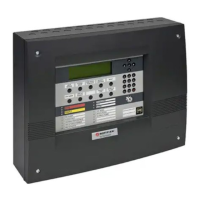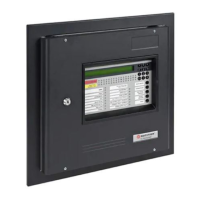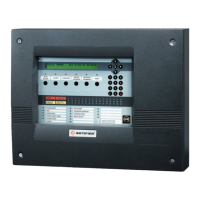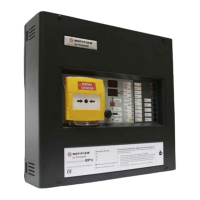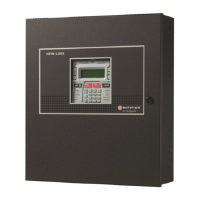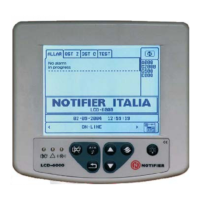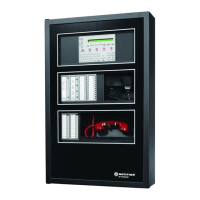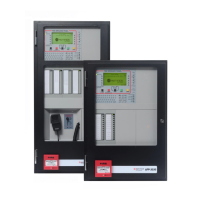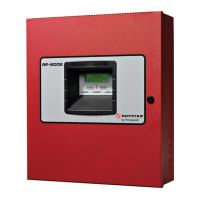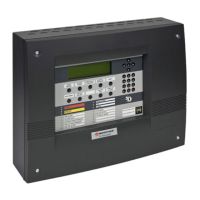
Do you have a question about the Honeywell Notifier ID3000 and is the answer not in the manual?
| NAC Outputs | 4 |
|---|---|
| Power Supply | 24 VDC |
| Display | LCD |
| Humidity Range | 10% to 93% non-condensing |
| Type | Fire Alarm Control Panel |
| SLC Loops | 1 |
| Maximum Devices | Up to 198 |
| Number of Loops | 1 |
| Max Devices per Loop | 159 |
| Max Devices per Panel | 198 |
| Communication Ports | RS-232, RS-485 |
| Operating Temperature | 0°C to 49°C (32°F to 120°F) |
| Number of Zones | Up to 198 intelligent zones |
Minimum hardware and software requirements for the PC used with the configuration tool.
Step-by-step instructions for installing the fire panel configuration software.
Methods for launching and accessing the fire panel configuration software application.
Procedure for establishing a data link between the PC and the fire alarm panel.
Description of the software interface, including menu bar, toolbars, and status bar.
Options for managing configuration files, including creating, opening, saving, and printing.
Functionality for adding, loading, and editing panel configurations within the database.
Settings for establishing and managing communication ports and data transfer with the panel.
Configuration of site details, network sectors, and custom tones for panel operation.
Defining panel name, type, number of zones, and language settings.
Configuring the number and type of loops, signal degraded monitor, and boost periods.
Setting up communication ports, printer connections, and third-party link controls.
Defining sounder startup, loop powered sounders, and ON/OFF periods for pulsing.
Configuring panel interaction with external fire control devices (FBF/ÜE) in VdS mode.
Setting parameters for automatic sensor tests and manual walk tests, including day and time.
Configuring parameters for disabling zones, sounders, and LEDs, including access levels.
Setting up two-stage investigation times and managing Day/Night mode switching.
Configuring backlight timeout, LED behavior, mains failure delay, and buzzer settings.
Setting parameters for extinguishing system release activation, flood duration, and soak timer.
Configuring zone and device coincidence rules for alarm activation and logic.
Configuring ÜE circuit testing and sector-based control actions for VdS networks.
Process for adding new devices to a loop, including device type, address, and zone.
Modifying parameters for existing loop devices, including sensors and modules.
Editing sensor properties like description, type, zone, and sensitivity levels.
Editing module properties such as description, type, zone, and supervision options.
Configuring custom sounder tones and volumes for OPAL protocol devices.
Explanation of the Control Matrix and its function in defining input/output relationships.
Details on valid inputs for control matrix rules, including alarm, fault, and disablement events.
Details on available outputs for control matrix rules, including zone activation and sounder control.
Configuration of extinguishing system activation based on alarms and non-fire events.
Combining control matrix entries using transfer flags for complex logic operations.
Procedures for reviewing, amending, creating, and deleting control matrix rules.
Step-by-step process for creating new control matrix rules for various input event types.
Overview of how Time-of-day (TOD) programs enable time-dependent panel functions.
Using manual override to temporarily reverse or control TOD program actions.
Steps for selecting, editing, or creating Time-of-day programs for panel functions.
Introduction to the two types of network configurations: Master/Slave and ID2net Peer-to-Peer.
Configuration details for Master/Slave networks, including station numbering and roles.
Configuration for fault-tolerant ID2net networks, including station addressing and repeaters.
Starting the Historic & Data Log Tool and setting up communication with the panel.
Description of the main window components: menus, icons, status, and data display areas.
Options for managing log files, including creating, saving, printing, and exiting.
Settings for establishing and terminating communication with the fire control panel.
Requesting and displaying historical event log data from the panel.
Fetching, initializing, and managing data logs for specific sensors and modules.
Requesting and displaying analogue/digital values for sensors and modules.
Overview of the Database Query Utility interface, including menus and icons.
Querying panel configuration data by loop address or zone number for analysis.
Detailed example demonstrating how to implement lock-out logic in the Control Matrix.
